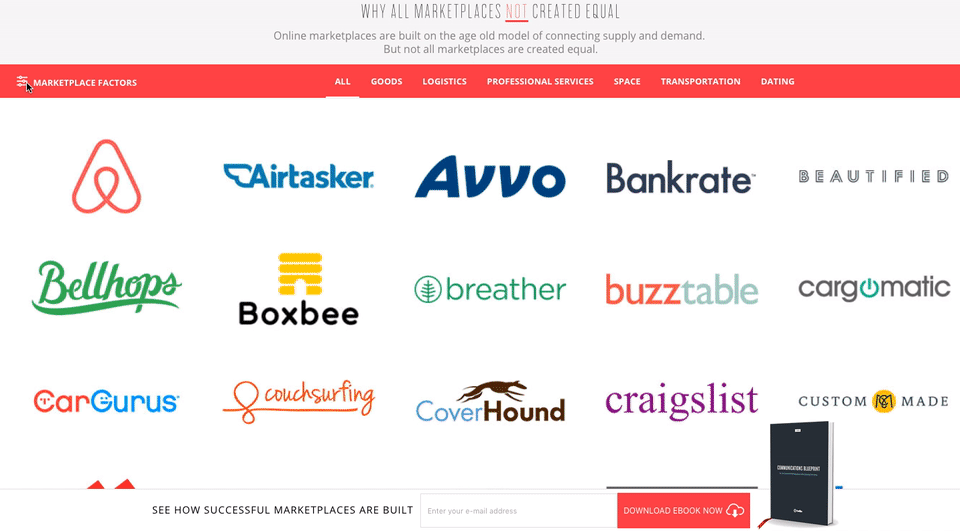Twilio Decodes Online Marketplaces
Time to read:
This post is part of Twilio’s archive and may contain outdated information. We’re always building something new, so be sure to check out our latest posts for the most up-to-date insights.

What do the age-old souks of the East have in common with today’s online marketplaces? Though the former may be more exotic, both are equally fascinating. Just think of Uber—as if pulling a magic carpet out of nowhere, you tap a screen and voila! your personal ride appears at the door.
Uber might not be the first name that pops up when you think of a marketplace, but it does tap into the classical supply and demand business model by connecting buyers and sellers. Looking through this lens, you quickly find the same model being adopted across a range of industries. Not all of these marketplaces, however, are created equal.
How is it that some of them achieve unicorn status whereas others fizzle and die out? This is one question we want to help you answer.
Decoding the marketplace landscape
In our quest to determine how they stand out, we explored 200 marketplaces and uncovered two distinct business models:
- On-demand services. Powered by swipe-away frontends and sharing economy backends. Growing over three and a half fold over the past two years, they account for $36 billion in consumer spending in the U.S. alone.
- Listing or directory services. The dog-eared yellow pages of yesterday are now online, connecting you instantly with roofers, plumbers and more. In fact, over 50% of searches for local services are done on mobile directories.
To share some of our insight and help you navigate your way through the marketplaces landscape, we created an interactive infographic based on the frequency of use, what’s exchanged and the communication functions employed.
What the infographic can tell you about unicorns
For on-demand marketplaces transactions take place with a press of a button on a daily/weekly basis, so keeping the conversation going throughout the purchase journey is key. What happens when you turn on your taxi app and see a 6 minute ETA? You turn to their competitor. This is why on-demand marketplaces need to reduce any friction between users and suppliers. Instacart, for instance, keeps customers in the loop throughout the shopper’s journey by sending alerts via chat or SMS, so they can be immediately notified if an item is missing or not found. Given the nature of the exchange is purely transactional, on-demand services deploy phone number masking to connect users and suppliers while protecting their identity. Choose “protect identity” on the infographic to see how phone number masking is used in other marketplaces.
On the other side of the spectrum, there are marketplaces that offer higher value products/services and have longer transaction cycles. Think of buying a car or a home, for example—a process which can take months or even years. The value the marketplace offers is a reliable repository of information in the form of listings and reviews. Since the transaction often takes place offline, the marketplace typically charges a subscription fee to be listed. What’s in it for the seller? More leads. Companies like Avvo, Zillow or Cargurus implement programmable phone numbers for each listing, so any time a new prospect calls, a new lead can be tracked and the seller can clearly see the number of leads generated by the marketplace.
Some of these marketplaces go the extra mile by helping professionals achieve higher conversion rates. For example, Zillow reports that if an enquiry is answered within 5 minutes, the probability to convert a lead is 100 times higher. In case the real estate agent misses a call, the company uses SMS to send lead alerts containing relevant information allowing agents to respond quicker to inquiries. Why not give the infographic a go and see other marketplaces that are using “track leads” as a communications tool?
Uncover marketplaces with Twilio
Providing communications as an app development building block to teams in hundreds of marketplaces, we’ve seen that unicorns don’t use magic, but use something just as transformative. By integrating communications building blocks into their marketplace, they are able to attract users, build trust and deliver exceptional service.
Read the Communications Blueprint for Marketplaces ebook to learn more about our findings.
Related Posts
Related Resources
Twilio Docs
From APIs to SDKs to sample apps
API reference documentation, SDKs, helper libraries, quickstarts, and tutorials for your language and platform.
Resource Center
The latest ebooks, industry reports, and webinars
Learn from customer engagement experts to improve your own communication.
Ahoy
Twilio's developer community hub
Best practices, code samples, and inspiration to build communications and digital engagement experiences.